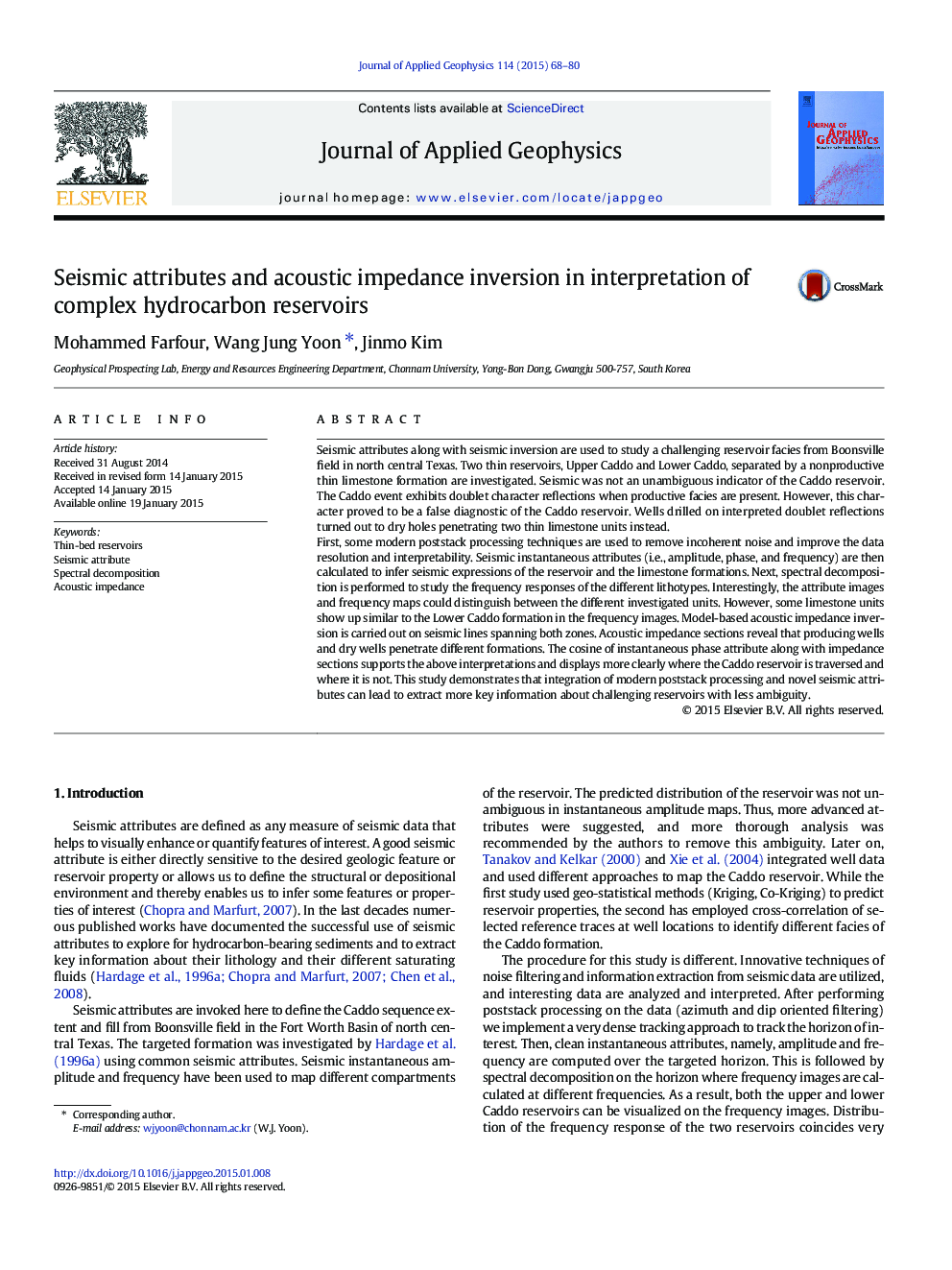| Article ID | Journal | Published Year | Pages | File Type |
|---|---|---|---|---|
| 6447232 | Journal of Applied Geophysics | 2015 | 13 Pages |
Abstract
First, some modern poststack processing techniques are used to remove incoherent noise and improve the data resolution and interpretability. Seismic instantaneous attributes (i.e., amplitude, phase, and frequency) are then calculated to infer seismic expressions of the reservoir and the limestone formations. Next, spectral decomposition is performed to study the frequency responses of the different lithotypes. Interestingly, the attribute images and frequency maps could distinguish between the different investigated units. However, some limestone units show up similar to the Lower Caddo formation in the frequency images. Model-based acoustic impedance inversion is carried out on seismic lines spanning both zones. Acoustic impedance sections reveal that producing wells and dry wells penetrate different formations. The cosine of instantaneous phase attribute along with impedance sections supports the above interpretations and displays more clearly where the Caddo reservoir is traversed and where it is not. This study demonstrates that integration of modern poststack processing and novel seismic attributes can lead to extract more key information about challenging reservoirs with less ambiguity.
Related Topics
Physical Sciences and Engineering
Earth and Planetary Sciences
Geophysics
Authors
Mohammed Farfour, Wang Jung Yoon, Jinmo Kim,
